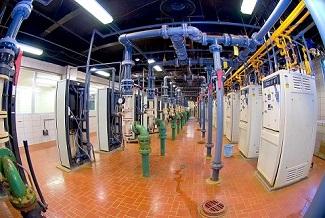Reviewing Treatment Methods for Six-Year Review of Drinking Water Standards
 When EPA promulgates a national primary drinking water regulation, it lists “best available technologies (BAT)” recommendations for drinking water treatment processes. To be a BAT, the treatment technology must meet several criteria such as having demonstrated consistent removal of the target contaminant under field conditions. The purpose of the treatment methods feasibility review is to ascertain that there are technologies that meet BAT criteria when a maximum contaminant level
When EPA promulgates a national primary drinking water regulation, it lists “best available technologies (BAT)” recommendations for drinking water treatment processes. To be a BAT, the treatment technology must meet several criteria such as having demonstrated consistent removal of the target contaminant under field conditions. The purpose of the treatment methods feasibility review is to ascertain that there are technologies that meet BAT criteria when a maximum contaminant level![]() maximum contaminant levelThe highest level of a contaminant that is allowed in drinking water as delineated by the National Primary Drinking Water Regulations. These levels are based on consideration of health risks, technical feasibility of treatment, and cost-benefit analysis. (MCL) can be lowered.
maximum contaminant levelThe highest level of a contaminant that is allowed in drinking water as delineated by the National Primary Drinking Water Regulations. These levels are based on consideration of health risks, technical feasibility of treatment, and cost-benefit analysis. (MCL) can be lowered.
-
acrylamide,
-
copper,
-
Cryptosporidium,
-
epichlorohydrin,
-
Giardia lamblia,
-
lead,
-
Legionella,
-
viruses,
-
total coliforms,
-
heterotrophic plate count (HPC), and
-
turbidity.
For these treatment technique regulated contaminants, Six-Year Review examines whether any improved or less expensive technologies are available that are at least as protective of public health as compared to the existing prescribed treatment techniques.
